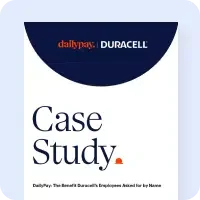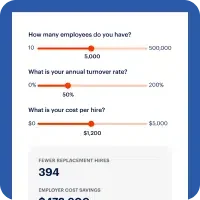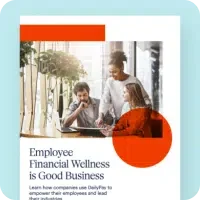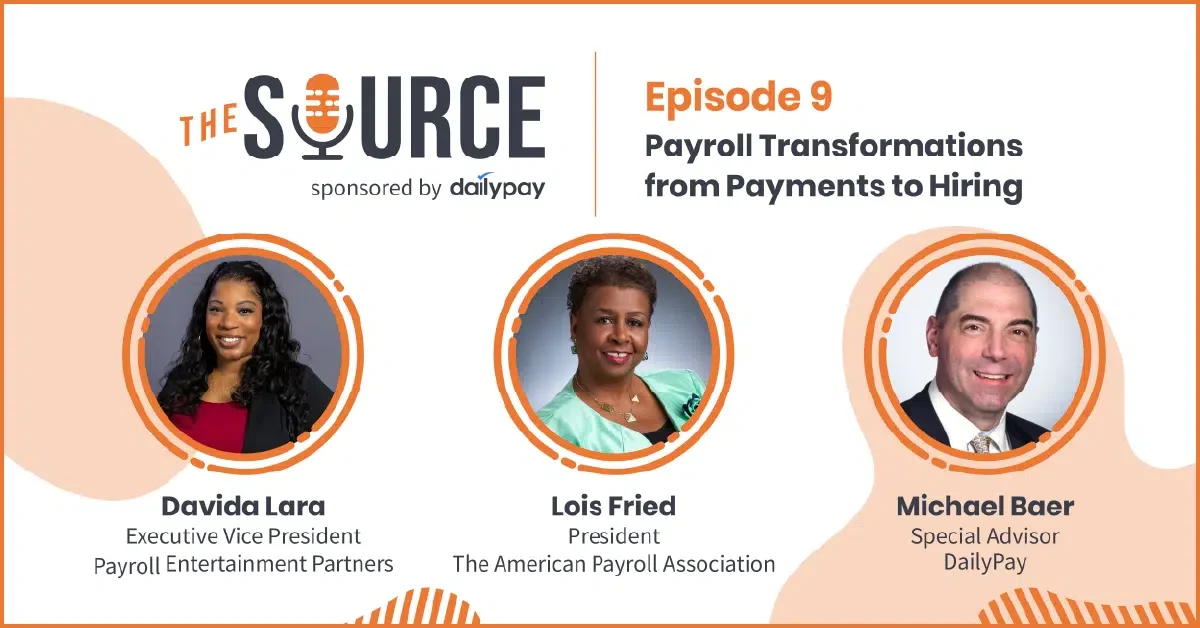Employer payroll operations had to pivot dramatically at the start of the COVID-19 pandemic. As entire operations moved off-site, payroll was processed mostly from homes.
Recently, two highly regarded payroll professionals, the American Payroll Association’s President, Lois Fried, CPP, and the Executive Vice President for Payroll for Entertainment Partners, Davida Lara, CPP, were guests on The Source podcast, sponsored by DailyPay. They discussed what had to change right away and what didn’t, the innovations that were driving further changes in payroll operations, and how employer policies for paying and hiring workers had to be modified to meet fiscal, safety and diversity requirements.
Once the pandemic took hold and offices shut down in mid-March 2020, employers and their payroll operations had to make some quick decisions to adapt their work to remote settings, according to Fried. One employer even had their payroll manager move company servers temporarily to her home, so payroll could be done.
But underlying all the change was the mandate to keep payroll operating as normally as possible. “Payroll needed to stay the same,” Lara said. “During a crisis it’s more important that people get paid than it’s ever been.”
“We had to operationally figure out how to get people to work remotely a lot more quickly than we would’ve thought,” said Lara, while many smaller organizations “were not really prepared,” according to Fried.
Another issue was making sure that all data security protocols were in place. “Probably one of the most important things to us is our security … especially around compliance and privacy laws,” Lara said.
As for positives coming out of this dramatic change in operations, Lara noted that the expanded use of technology “has been incredible right now. Shout out to technology,” she said.
Fried said the move to remote work has enhanced working relationships. For payroll, this has led to more interaction with employees and customers, spurring creativity to bring programs virtually to workers. “I think that it will just continue to bring us closer together, give everybody more opportunity to think more innovatively and to take that input … [to] the C-suite level; we are listening, we hear you, and we’re going to make some changes for payroll. Hopefully that’s going to continue.”
The opportunity to move to more electronic delivery also has been welcome, according to Lara. It is “important for our clients to have a no-touch environment right now because of COVID and health issues,” she said.
Fried noted that with new payment tools like on-demand pay, sometimes called earned wage access, “one of the things that I probably like the most … is having the employees in control of their own pay … they can reach out and grab a piece of it when they need it to take care of certain situations within their own personal life. But it also gives them the opportunity to look at how they can save, and to see those transactions. I think we’ll just continue to see ways that we can help employees have different options.”
“How we pay, what we pay is changing at the same time. So it’s dynamic and it’s awesome,” Lara said.
When hiring payroll professionals, attributes such as technical skills, the knowledge that employee personal information needs to remain personal and confidential, and having attention to detail are all qualities of a successful candidate. But most important, according to Lara, is passion. “If you don’t have a passion for understanding what the impact of those payments means to an individual, then you won’t be successful in this space,” she said.
More broadly, recognizing the health crisis and the push for more systemic change to promote a diverse workforce, following the death of George Floyd, requires that employers rethink their hiring policies.
“Organizations should take this opportunity to look back and reflect on the last four months and what we did right, and what might we need to change to really be accountable to our organization. And we need to make sure that with every employee … and we have a diverse community here, we’re making it safe and warm and welcome,” Fried said.
As for Lara, who sits in the C-suite of her organization, diversity “needs to be at the core, not something that is trending, but something that has to be embedded within an organization.” Employers need to be involved in creating training programs that ”give people those skills, to give them the opportunity to apply for those roles that may come up,” she said. As a result, organizations are going to “get more applicants that are diverse and then in turn, the organizations will be more diverse.”
For additional resources on this topic, see:













